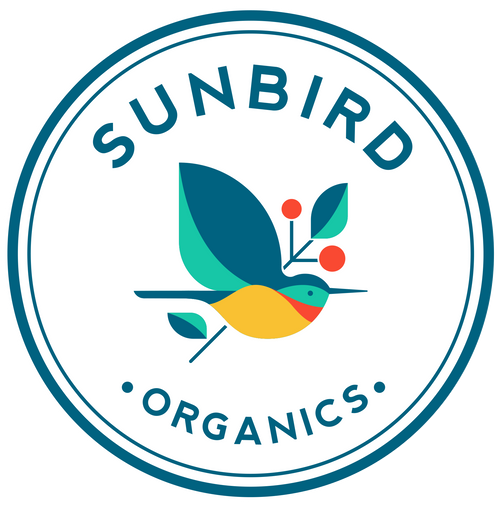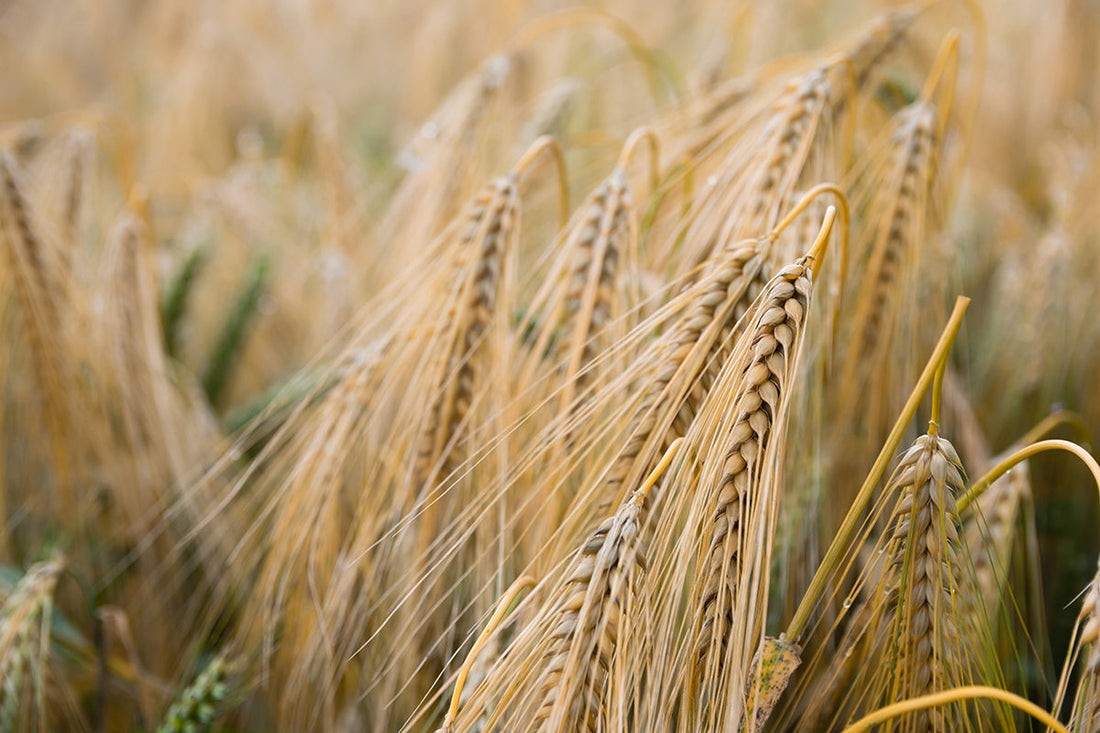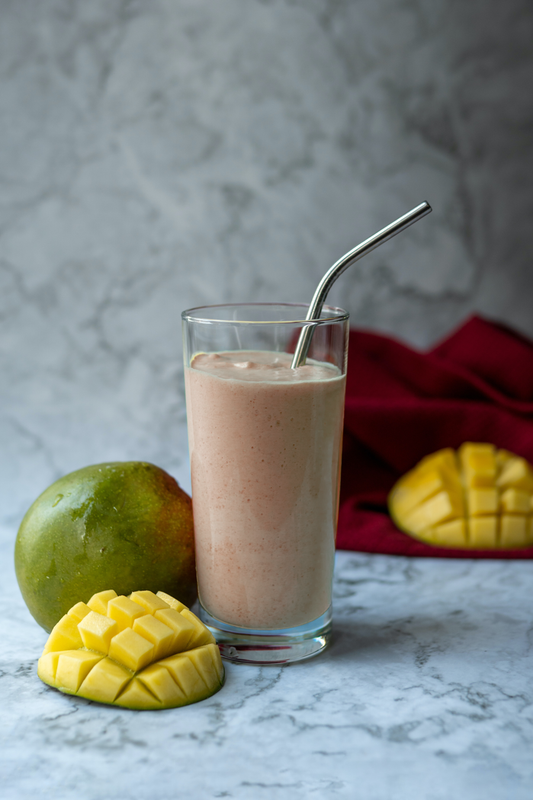For the past few years, we have been hearing the medical community encourage us all to increase our dietary fiber intake. Science continues to find evidence that adequate fiber intake benefits your body’s digestion and reduces your risk of chronic disease. A study published just this year found that increasing your fiber intake for just two weeks can alter your gut bacteria.1
Fiber is touted as highly beneficial to health because it helps to feed the millions of good gut bacteria that live in your digestive tract, also referred to as your microbiome. However, not all fiber is created equal. This article will discuss different types of fiber, how fiber benefits your overall health, and the best sources of fiber.
Types of Fiber
Dietary fiber is a non-digestible carbohydrate found in foods. There are two major kinds of fibers: soluble and insoluble. Soluble fiber absorbs water like a sponge and increases in volume like a jelly. Insoluble fiber does not absorb water and therefore gives shape, volume, and consistency to stools. Because both fibers are found in all plant foods, the health benefit occurs simultaneously when you consume a plant-based diet.
Soluble fibers, known as mucilages and pectins, have the positive effect of sticking to fats and cholesterol in food, thus preventing these substances from the intestine into the blood. These fibers also allow the sugar in fruits (fructose) to be absorbed more slowly, preventing high amounts of sugar in the blood and requiring less work from the pancreas to produce insulin. Also, by cultivating good gut bacteria, soluble fiber is also key to helping the body regulate weight, blood sugar, immune function and even brain function.2
So, how exactly does fiber support gut and overall health? Like all organisms, the bacteria in our gut need to eat something to get energy. While bacteria live throughout the digestive tract, the highest concentration of microbes live in our large intestine. Carbohydrates, proteins and fats in food are absorbed into the bloodstream in the small intestine, and the remaining unprocessed fiber travels into the large intestine where bacteria can break it down. When we consume low amounts of fiber in our diet, for example in a diet high in meat, dairy and highly-processed foods, that leaves little for the good gut flora to consume.
Fiber Health Benefits
Dietary fiber interacts with macronutrients in our food and with our gut microbiome. Here are some of the ways in which these interactions can benefit our overall wellbeing:
- Fiber decreases the absorption of bad cholesterol, or low-density lipoproteins (LDL) cholesterol, thereby lowering the total cholesterol level in the blood.
- Fiber helps regulate blood sugar levels by slowing the absorption of sugar, which can prevent diabetes and help manage it if you already have it.
- Fiber increases satiety, so fewer calories are consumed when more fiber is eaten which may aid weight management.
- Fiber gives shape, volume, and consistency to the stool, normalizes bowel movement, prevents constipation, and reduces the probability of developing hemorrhoids and diverticula.
- Fiber can decrease your risk of dying from heart disease and cancer. Almost 250 studies confirmed on a large scale that eating lots of fiber from vegetables, fruits, and whole grains offer this health benefit.3
- Fiber can help you live longer. In a study of over 500,000 older Americans, those eating the highest amount of fiber reduced their risk of dying by 23% compared to those eating the least amount of fiber.4
A diet based on whole vegetables is the best guarantee for intestinal health. Include whole, plant-based foods in your dishes and you will ensure good amounts of fiber that support your microbiota. Also make sure to eat various foods that are rich in different types of fiber throughout the day. The more variety, the greater the benefits for our intestinal flora.
Where to find soluble fiber
Foods that contain an immense number of soluble fibers include oats, nuts, flaxseed, legumes (lentils, beans, peas, chickpeas), barley, and psyllium. We also find them in fruits such as oranges, apples, pears, blueberries, strawberries, and vegetables such as carrots, celery, and pickles. Here is a table with 10 high-fiber foods you should add to your diet.
|
High-Fiber Foods5 |
Grams of Fiber (per 100g) |
|
Dark chocolate (70-95%) |
10.9 g |
|
Chia seeds |
34.4 g |
|
Almonds |
13.3 g |
|
Oats |
10.1 g |
|
Split peas |
8.3 g |
|
Lentils |
7.3 g |
|
Chickpeas |
7 g |
|
Kidney beans |
6.8 g |
|
Avocado |
6.7 g |
|
Artichoke |
5.4 g |
Where to find insoluble fiber
Insoluble fibers, known as cellulose and lignins, do not absorb water. Therefore, their effect mainly gives shape, volume, and consistency to the excrement to be easily expelled. That makes them very beneficial to combat constipation and hemorrhoids. The richest sources of insoluble fibers are the skins of fruits, cereals, and grains such as wheat and corn and vegetables such as cauliflower, celery, broccoli, green beans, and potatoes.
Plant foods contain the two types of fiber in different proportions, so to achieve the greatest benefit, it is important to consume an abundant variety of plant-based foods daily.
How much fiber do we need?
The USDA’s recommended daily amount for adults up to age 50 is 25 grams for women and 38 grams for men. Women and men older than 50 should try to consume 21 and 30 daily grams, respectively. Sadly, most Americans only consume about 10-15 grams per day leaving their gut microbiome vulnerable to imbalances.
Easy ways to add more fiber to your diet
- Read the nutrition label. Aim for 6 grams of fiber per serving for cereals, 3 or more grams per serving for breads and crackers and 4 or more grams per serving for pasta.
- Don’t be fooled by marketing. If a label states “multigrain” or “12 grain” it doesn’t necessarily mean it is whole grain. These grains could be refined and low in fiber. Check for whole grains as the first ingredient on the list. If the first ingredient says it is “enriched” it is not a whole grain.
- Add nuts, seeds and fruit to plain yogurt.
- Add more vegetables, beans or peas to your soup recipes.
- Start your day with oatmeal, muesli or other high fiber cereal.
- Add berries, nuts and seeds to your salads and smoothies.
- Make vegetarian chili filled with lots of beans and vegetables.
- Replace chips with vegetables such as carrots, broccoli, cauliflower and dip in hummus or salsa.
- Buy more whole foods in your grocery produce section and less food in boxes or cans.
- Eat whole fruits instead of fruit juices.
- Eat at least one vegetarian meal a week. Make sure that it is completely vegetarian and focuses on unprocessed vegetables.
Helpful tips to increase your fiber intake:
- Gradually increase your fiber intake to give your gastrointestinal tract time to adapt.
- Drink more water as you increase your fiber.
- If you have any digestive problems, such as constipation, check with your physician before dramatically increasing your fiber consumption.
Increasing your daily fiber doesn’t have to be a negative experience. Take a positive approach to eating more high-fiber foods. Finding fresh and in season fruits and vegetables can be extremely tasty and satisfying. Visit your local farmer’s market or join a CSA to find great tasting fresh produce. The benefits of fiber to your diet are dramatic; reduce your risk of cancer, heart disease and premature death. Eating a variety of whole foods that contain good sources of fiber can help you feel fuller longer, reduce your weight and improve your cognition.
References
- Oliver, A., Chase, A., Weihe, C., Orchanian, S., Riedel, S., et al. High-Fiber, Whole-Food Dietary Intervention Alters the Human Gut Microbiome but Not Fecal Short-Chain Fatty Acids. mSystems. March 2021.
- Guarner, F., & Malagelada, J. R. (2003). Gut flora in health and disease. Lancet (London, England), 361(9356), 512–519. https://doi.org/10.1016/S0140-6736(03)12489-0
- Reynolds, A., Mann, J., Cummings, J., Winter, N., Mete, E., & Te Morenga, L. (2019). Carbohydrate quality and human health: a series of systematic reviews and meta-analyses. Lancet (London, England), 393(10170), 434–445. https://doi.org/10.1016/S0140-6736(18)31809-9
- Park, Y., Subar, A. F., Hollenbeck, A., & Schatzkin, A. (2011). Dietary fiber intake and mortality in the NIH-AARP diet and health study. Archives of internal medicine, 171(12), 1061–1068. https://doi.org/10.1001/archinternmed.2011.18
- Gunnars, K. 22 High Fiber Foods You Should Eat. Healthline. Oct 22, 2020. Retrieved on July 5, 2021 from https://www.healthline.com/nutrition/22-high-fiber-foods.







